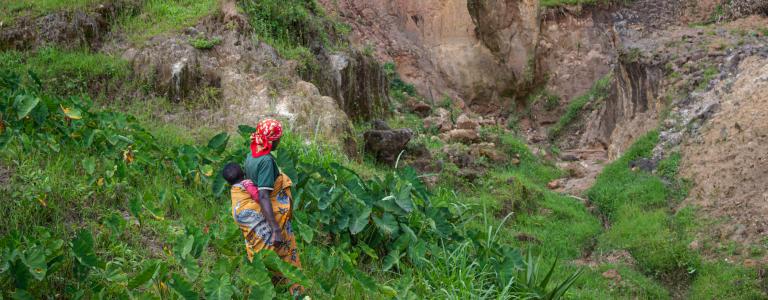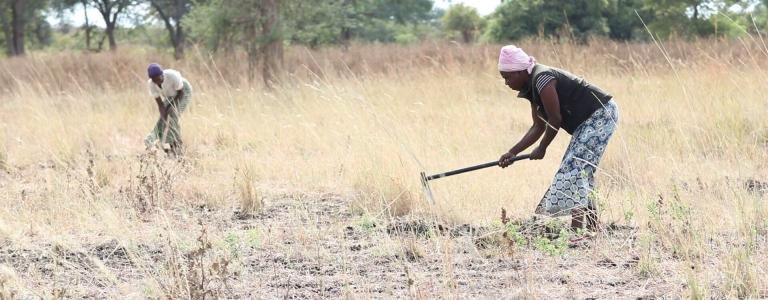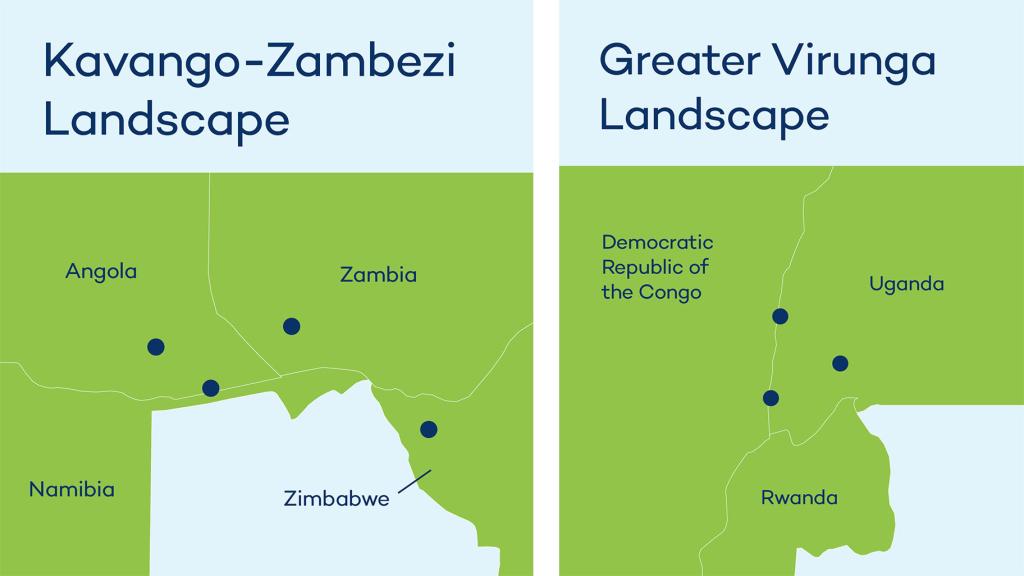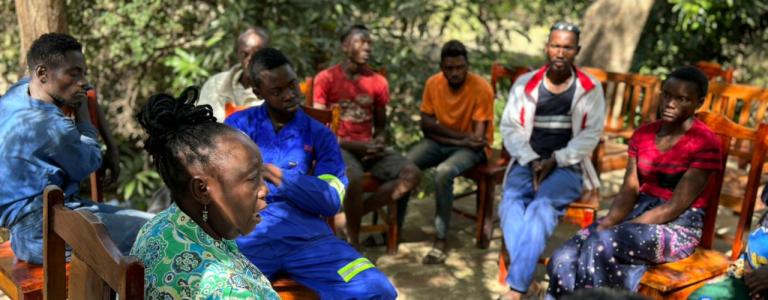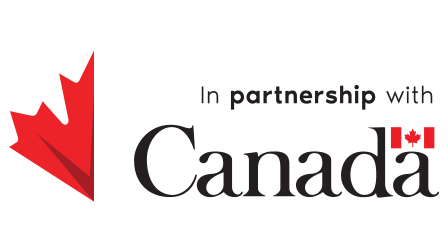How to Make Nature-Based Solutions for Adaptation Work for Everyone
To be effective, nature-based solutions (NbS) for adaptation need to consider how our unique identities influence our interactions with the natural world and our capacity to adapt to the impacts of climate change. It sounds challenging, but it starts with integrated climate risk assessments. We share three key take-aways from IISD’s Climate Adaptation and Protected Areas Initiative (CAPA) that will help practitioners plan for effective, inclusive, and sustainable NbS for adaptation.
NbS for adaptation can enhance biodiversity and strengthen climate resilience for both communities and ecosystems. However, communities are made up of diverse people with different needs, who experience the impacts of climate change and biodiversity loss in distinct ways.
Knowing this, how can we ensure that NbS for adaptation benefit everyone?
It all starts with planning.
Planning for NbS for adaptation requires recognizing how different people are impacted by climate change, understanding the factors that influence their vulnerability and exposure to climate hazards, and working with them to identify which adaptation options might work for them.
It means identifying how adaptation priorities differ within and among groups and what factors might enable—or inhibit—their ability to access and share in the benefits of nature.
To ensure that NbS for adaptation initiatives are effective and sustainable, gender and social differences must be considered in the planning process.
The Intergovernmental Panel on Climate Change’s Sixth Assessment Report on Climate Change (2022) says that equity and justice are key considerations in climate change adaptation, and these principles cannot be advanced without attention to the adaptive capacity and disproportionate risks experienced by vulnerable people.
Globally, we know that people’s vulnerability to climate change varies depending on social factors, such as gender, sexuality, age, socio-economic status, race, ethnicity, Indigeneity, nationality, and ability, among others. We also know that people have different roles and responsibilities in the access, use, and management of natural resources, and this, too, can influence vulnerability to climate change. There is also now evidence that attention to gender and social differences improves the effectiveness of adaptation efforts overall. Additionally, policy initiatives focused on global biodiversity conservation (such as the IUCN (International Union for Conservation of Nature) Global Standard for Nature-based Solutions and Target 23 of the Global Biodiversity Framework) also highlight the importance of considering gender equality and social inclusion (GESI).
Including more diverse perspectives in resource governance and conservation efforts can also yield better results, given the unique and specialized relationships with nature possessed by different groups, such as women and Indigenous Peoples.
Having this information on how different groups interact with nature and how they are impacted by climate change and biodiversity loss is critical to the development of effective NbS for adaptation.
If NbS for adaptation are not designed with these differences in mind, they will miss the mark, which may lead to maladaptation and worsen vulnerabilities for some groups.
So, how can you collect this essential information during the planning process?
Understanding Gender and Social Issues in NbS for Adaptation: Our approach
IISD experts leading the CAPA Initiative, a 3-year project funded by Global Affairs Canada, recommend starting the planning of nature-based adaptation projects with an integrated climate risk assessment.
Seeking to promote natural solutions and strengthen climate resilience in Belize and the Greater Virunga and Kavango-Zambezi landscapes*, they first gathered information on climate change and biodiversity loss and assessed how these issues impact communities within or adjacent to the Protected Areas.
*Fiji's integrated climate risk assessment is currently ongoing.
A key aim of the process was to better understand the different impacts of these issues based on gender and other social factors. This information was gathered by integrating GESI criteria into the climate risk assessment. This involved attention to GESI both in the questions the assessment aimed to answer (for example, assessing the relative decision-making power and opportunities of different groups in conservation planning processes) and in the process undertaken (for example by ensuring gender-responsive methodologies were used to collect data through separate, confidential focus group discussions that were inclusive of underrepresented groups, such as women and youth).
The assessments, implemented together with the World Wide Fund for Nature Africa and the Wildlife Conservation Society in Belize, analyzed gender differences and helped to determine which groups within the landscapes are considered “underrepresented” regarding their participation in and leadership of natural resource and/or Protected Areas management.
In Belize and the Greater Virunga landscape, the groups identified as underrepresented consist of youth and Indigenous Peoples: the Garifuna in Belize and the Batwa populations in the Greater Virunga landscape. In the Kavango-Kambezi landscape, they consist of youth and persons with disabilities. Across the landscapes, women were identified as facing barriers due to gender inequality. These groups became the focus of the assessments, which enabled the CAPA initiative to better understand the unique constraints and opportunities they experience to design NbS for adaptation activities that could encourage their active participation and leadership.
What follows are three key take-aways that highlight important insights gathered from the assessments and how this information will help project partners plan for just and effective, fit-for-purpose NbS for adaptation.
Key Take-Away #1: People of different genders and social groups rely on different livelihood activities, which influences their adaptation priorities
Findings from the assessments demonstrated that men, women, and underrepresented groups undertake different livelihood strategies according to roles, responsibilities, and cultural norms that influence their daily activities. Gendered roles within key resource sectors mean that women and men are affected by the impacts of climate change in different ways. For example, in both the Greater Virunga and Kavango-Zambezi landscapes, women are often responsible for gathering water and fuelwood, as well as procuring food, which becomes more arduous during drought.
In Belize, fishing is dominated by men, who are strongly affected by declining fish stocks due to rising sea temperatures. The degree of dependence on a particular resource or livelihood strategy also plays a role in vulnerability to climate change. For example, climate hazards have resulted in Belize’s Garifuna communities scaling back their traditional farming practices. In the Kavango-Zambezi landscape, people with disabilities are facing challenges in cultivating home gardens—a key source of food security—because the river they previously relied on has dried up.
These differences in livelihood activities influence people’s priorities when it comes to adaptation. In Belize, youth expressed a preference for options that gave them hands-on, practical experience, such as coral, mangrove, and beach restoration, while women were least interested in options linked to forests and forestry due to safety concerns. In both the Greater Virunga and Kavango-Zambezi landscapes, both men and women expressed an interest in NbS for adaptation that were linked to the diversification of livelihoods to build resilience.
Having information on these differences in livelihoods and preferences is key to planning NbS for adaptation that can benefit everyone.
Key Take-Away #2: Resource access and control strongly influence barriers and opportunities for NbS for adaptation
Across the CAPA landscapes, the assessments highlighted the critical role that land tenure and other natural resource access and control issues play in shaping people’s livelihood opportunities and, consequently, their vulnerability to climate impacts.
In Belize, more women are interested in taking up livelihood strategies such as farming, yet many lack ownership of key assets, including land. Indigenous groups such as the Batwa in the Greater Virunga landscape and the Shangaani in the Kavango-Zambezi landscape have seen their traditional territories appropriated to create Protected Areas. In the latter, local communities have access to buffer zones with key natural resources, yet traditional authorities (often men) govern the use of communal resources. In the former, both men and women have access to ecosystem services, yet land is primarily owned by men who make decisions on land allocation and associated activities. Lack of land ownership is linked to less decision-making power regarding natural resource management in the Greater Virunga landscape.
NbS for adaptation are long-term investments in climate resilience and biodiversity conservation outcomes, which require secure land access or ownership. It is simply not feasible to expect community members to invest in long-term solutions if they face immediate climate risks and lack secure tenure. It is important to recognize that some groups, such as women, may not benefit in the same way if NbS for adaptation activities, such as land restoration, are prioritized over others. This is why it is helpful to gather information on the gender and social dimensions of resource access and use it to plan NbS for adaptation that can deliver equitable benefits to communities.
Key Take-Away #3: Women and underrepresented groups play important roles in natural resource management but often experience structural challenges and capacity gaps
In all three landscapes, the assessments revealed persistent barriers that limit the meaningful participation of women and other underrepresented groups in decision making related to NbS for adaptation. In the Greater Virunga and Kavango-Zambezi landscapes, most local Protected Areas management plans have demonstrable gaps in inclusivity. Often, women are present in planning meetings to give a semblance of participation, but the final decisions and plans do not reflect their concerns, needs, or goals. Similarly in Belize, the Garifuna are not always consulted on the management of ecosystems that hold cultural and traditional importance.
Across the landscapes, women and underrepresented groups expressed that they lack opportunities, knowledge, and technical skills to engage in NbS for adaptation.
In Kavango-Zambezi, women noted a desire for technical skills to enable their participation in agroforestry. In Belize, women and youth are highly motivated to participate in NbS for adaptation, yet they lack confidence in their ability to influence conservation and Protected Areas management priorities.
Mapping conservation and natural resource management structures to understand capacities, needs, and gaps is essential to planning NbS for adaptation. Often, women and underrepresented groups provide leadership within community-level groups. In Greater Virunga, there are many women involved in savings and loan programs, as well as livelihoods-related groups that deal with conservation issues. However, many of these groups are informal and lack broader decision-making power, technical skills, and access to information. The sustainability and success of NbS for adaptation is contingent on improved and inclusive governance over the long term, and women and underrepresented groups are key players in these efforts.
What Do These Findings Mean for Planning NbS for Adaptation?
In learning from CAPA, it is clear that NbS for adaptation must be planned with consideration for how people’s unique identities influence their interactions with the natural world and their capacity to adapt to the impacts of climate change. This can be accomplished by conducting an integrated climate risk assessment that incorporates GESI and using the findings to inform NbS for adaptation options.
Gathering this information can help identify creative ways to ensure different groups can benefit from various NbS for adaptation actions. What matters is finding balance in the planning of NbS for adaptation options, being honest about who may benefit and who may not, and ensuring options address different needs, capacities, and priorities. Planning NbS for adaptation with this information in mind will ensure that the solutions proposed are effective, inclusive, and sustainable.
For more on inclusive NbS for climate adaptation, see our guide for practitioners and communities here.
This piece was largely informed by the reports produced by the two integrated assessment consultancy teams in the African landscapes and in Belize, which will be published and shared on the CAPA website. In the African landscapes, the consultancy team that performed the assessment consisted of the following: Luckson Zvobgo (Climate Change Context; NbS for Climate Adaptation; Governance, Gender, and Social Context); Evidence T. Kasinganeti (Governance, Gender, and Social Context as well as Conflicts Context); Sandra Bhatasara (Governance, Gender, and Social Context); Felix Kalaba (Ecosystem Context); and Andreas L. S. Meyer (Biodiversity; Climate Change Context). In Belize, the consultancy team Compass Communication and Research performed the assessment with assistance from the Wildlife Conservation Society Conservation Planning Team.
You might also be interested in
Mainstreaming Gender Equality and Social Inclusion in Nature-Based Solutions for Climate Change Adaptation
Discover tools, recommendations, and case studies on how to plan, design, and implement nature-based solutions for adaptation that advance gender equality and social inclusion while enhancing resilience, biodiversity, and ecosystem integrity.
Hope Springs: How one community brought a river back from the brink
For over a decade, a small group of community members in Zambia have been working to restore the Nsongwe River. Now, with support from IISD’s Climate Adaptation and Protected Areas Initiative, their goal is within reach.
Inclusive Nature-Based Solutions for Climate Adaptation
Discover how climate change and biodiversity loss impact people differently and how inclusive nature-based solutions for adaptation can help.
Biodiversity Is in Crisis—Here's one way to fix it
A growing movement of projects and partnerships is using locally driven and gender-responsive nature-based solutions to address the twin crises of climate change and biodiversity loss. Scaling up this work to match the urgency and reach of the crises will be a challenge—but it’s one we must embrace.
